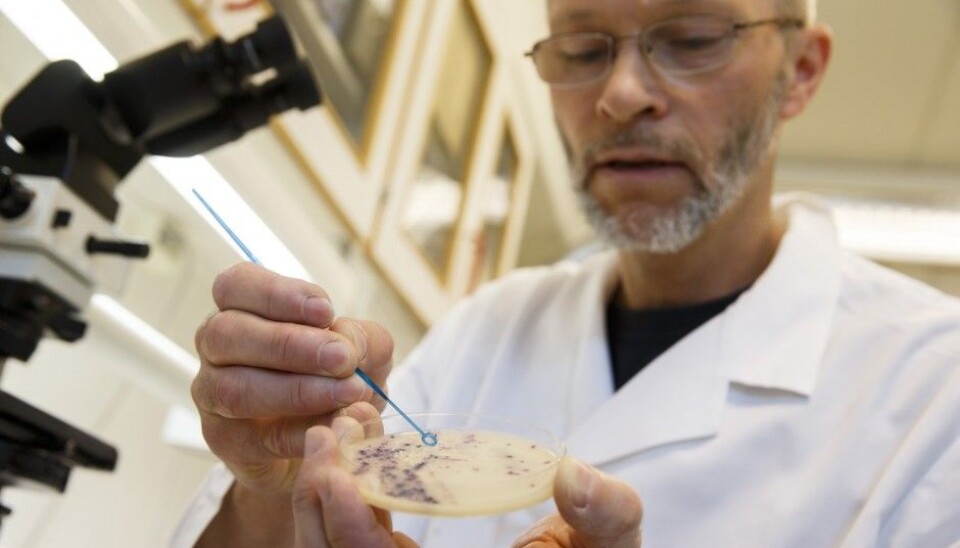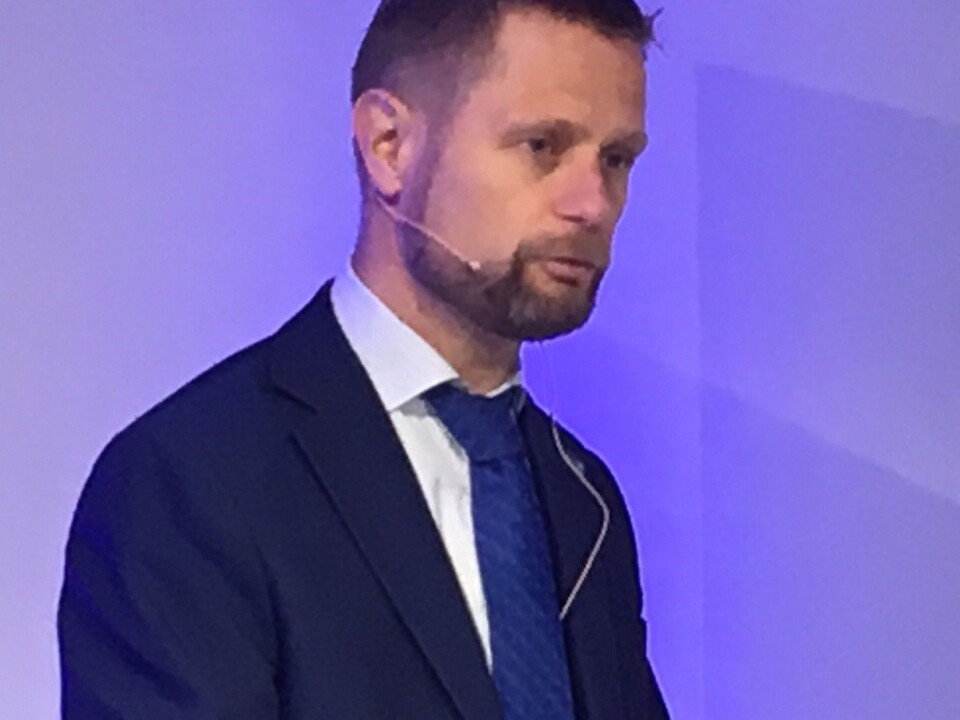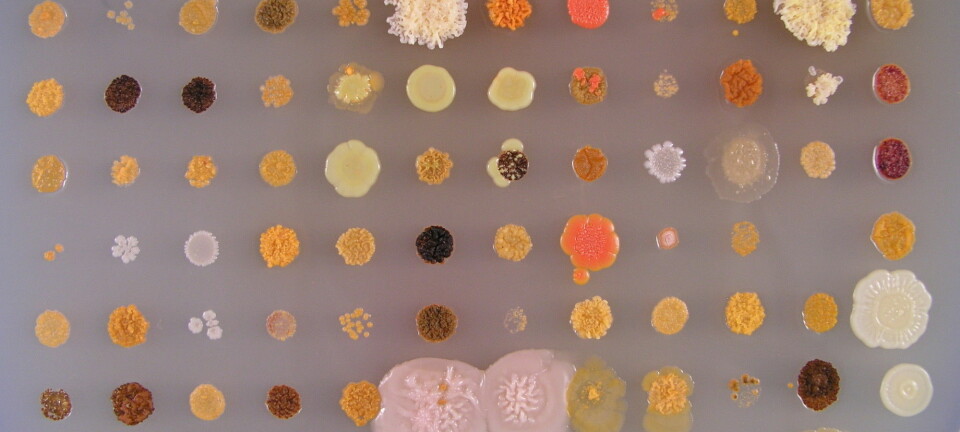
Indestructible bacteria threaten cancer patients
Cancer patients may die from infections as antibiotic-resistant bacteria continue to spread. The Norwegian Cancer Society is now fighting unnecessary antibiotic use.
Norway has more and more cancer survivors due to better treatment options. But now the Norwegian Cancer Society (NCS) is sounding the alarm. Survival rates may soon fall dramatically.
"We’re losing the most important tool for treating cancer," said NCS Secretary General Anne Lise Ryel at a recent meeting.
She says cancer mortality could double compared to today, if antibiotic resistance in Norway becomes widespread.
Currently seven out of ten cancer patients survive the disease; in a worst case resistance scenario only four out of ten cancer patients may survive in the future.
Cancer patients are particularly vulnerable

Many cancer patients are dependent on effective antibiotics to survive standard cancer treatment.
Cancer patients would be among the hardest hit if widespread resistance in Norway grows. Many could succumb to infections following cancer treatment.
Resistant bacteria would especially affect leukaemia and lymphoma patients. These patients are completely dependent on antibiotics, because their impaired immune system is susceptible to infections following bone marrow transplants.
Several cancer survivors have stepped up to support the recently launched NCS campaign.
One of them is Bengt Eidem who battled cancer for the second time in 2009.
He was diagnosed with a very aggressive form of blood cancer in January 2005. Eidem wrote a blog about cancer and the struggle to find a matching bone marrow donor.
After the bone marrow transplant, he was considered fully recovered in September of the same year. Then in 2009, cancer struck Eidem once again, and he recovered for the second time in the same year.
"If I hadn’t had effective antibiotics during my cancer treatment, I wouldn’t be alive today," he said.
But many people with other types of cancer also risk dying from post-treatment infections, said Ryel.
Surgery wounds, which are prone to becoming infected, rely on antibiotics to heal. The immune system is also weakened following chemotherapy.
"If the resistance persists, at worst, patients won’t be able to get treatment like they do today, because it will become too risky," explains Ryel.
The path to resistance
But how do some bacteria become resistant?
Bacteria have a generation time of 17 minutes. New mutations are created all the time.
Some mutations make enzymes that pump the antibiotics out of the cells, or prevent them from binding to the cell. And so the resistant bacteria survive.
If a patient with resistant bacteria is treated with antibiotics, many of the other bacteria in the body will be destroyed and give the resistant bacteria extra good growing conditions.
These bacteria can easily be passed on to other patients via healthcare professionals and equipment.
General practitioners prescribe most
It’s no longer a matter of whether we will acquire antibiotic resistance, but when we will.
"Resistance is gradually increasing, but how fast it increases is where we have some leverage," said John-Arne Røttingen, Director of the Research Council of Norway.
The World Health Organization (WHO) already concluded in 2012 that antibiotic resistance is the biggest health threat in the world.
General practitioners prescribe the most antibiotics, amounting to 65 per cent of the annual consumption. Emergency physicians follow with 15 per cent of prescriptions, and hospitals and nursing homes prescribe far less.
NCS encourages everyone to use fewer antibiotics to slow down the growing resistance.
"For example, it's normal to cough for two to three weeks after the flu," says Professor Dag Berild, a professor in the Institute of clinical medicine at the University of Oslo. People rarely need antibiotics for less severe infections like these.
A trial project is currently underway in many Norwegian municipalities to become more aware of antibiotic use. General practitioners are keeping track of what they are prescribing and will then be compared with their colleagues.
By 2021, all municipalities will be phased in to the project in hopes of reducing antibiotic use.
More research needed
Röttingen emphasizes that in addition to more research on new and more effective antibiotics, it is important to develop alternative treatment methods.
"Meanwhile we’ll continue to use antibiotics, but we have to use them more responsibly – and less,” he added. Cancer patients have priority.
The problem with research is that new types of antibiotics that could be further researched are put on the shelf for use only in extreme emergencies. As Röttingen explains, the pharmaceutical industry has little incentive to research them because it makes too little profit while it holds the patent on the products.
"We need to find different funding so the research can still happen. Hospitals should pay, and several countries should share the cost,” he said.
Tourism is dangerous
Alexander Fleming warned against unreasonable use of antibiotics way back in 1945, when he received the Nobel Prize in Physiology or Medicine for his discovery of penicillin.
"Antibiotics have had a huge impact, but bacteria are exceptionally effective at becoming resistant," said Bent Høie, Norwegian Minister of Health and Care Services.
He says a clear connection exists between the amount of antibiotics used in a country and how resistant they become. Even though Norway still has a low resistance level, it will increase there as well.
“Antibiotic-resistant bacteria know no borders. They can travel through food, animals, the environment and people,” says Høie.
"The further east and south you go, the greater the risk of being infected by resistant bacteria. It’s risky to land in a hospital a lot of places in the world and not something people should do voluntarily," says Berild, a consultant and infectious disease specialist.
For years, he has researched antibiotic resistance and tried to make politicians understand the seriousness and take action.
Italy and Greece hit
Some European countries already have dangerously high levels of such bacteria.
In Greece, the proportion of multidrug-resistant Klebsiella increased from 2 per cent to 30 per cent in just two years. This bacterium can cause pneumonia and especially affects people with impaired immune systems.
Italy has an E. coli bacterium that has become resistant.
MRSA is another bacterium for which no antibiotic is effective. The large increase of MRSA in Norway in recent years is due in large part to Norwegians’ travel activities.
An estimated 700,000 people die annually from resistant bacteria, and this estimate is conservative. If antibiotics use doesn’t decrease, that number could rise to 10 million deaths in 2050.
The goal is to reduce antibiotic use 30 per cent by 2020. To date we’ve only managed to reduce their use by 13 per cent, says Høie.
"All countries have to get on board, and Norway is a leading force in this effort," said Høie.
-----------------------------------
Read the Norwegian version of this article at forskning.no


































